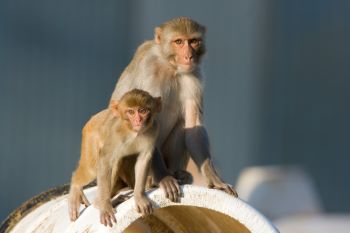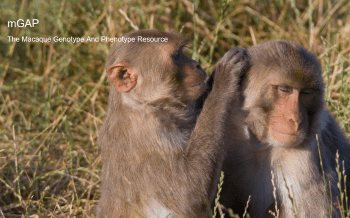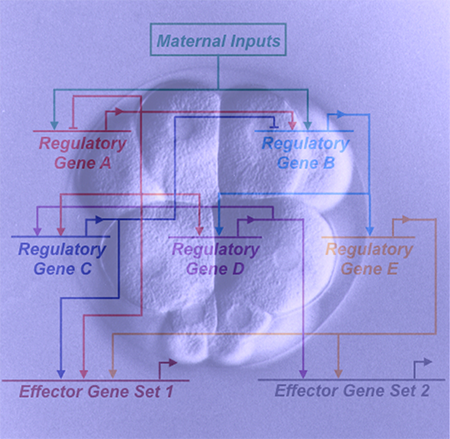Grant Number: P40OD010939
Research Emphasis/Objectives
The Referral Center for Animal Models of Human Genetic Disease (RCAM), formed in 1974, identifies naturally occurring animal models of human genetic disease through our metabolic and molecular laboratory (research.vet.upenn.edu/penngen) and acquires breeding animals or semen from an international network of veterinary specialists and institutions. Our External Advisory Board, in discussion with our Executive Committee, determines which animal lines will be bred, which diseases will be further phenotyped, and which experimental therapies will be evaluated. The tremendous expertise of the veterinary scientists and the state-of-the-art facilities within the School of Veterinary Medicine at the University of Pennsylvania (PennVet) provide unparalleled capability to fully characterize and care for these canine and feline models of disease.
Development of satisfactory therapies for many lethal or debilitating genetic disorders in humans is currently limited by (1) the relatively low incidence and high heterogeneity of these diseases, (2) an insufficient understanding of how the genetic defect results in the phenotypic abnormalities, (3) the paucity of validated surrogate markers that can be monitored as secondary clinical endpoints, and (4) the dearth of available and potential therapies that substantially improve disease in animal models. The RCAM is a unique and valuable resource that excels in the discovery, characterization, maintenance, and sharing of dog and cat models of human hereditary diseases for use in translational studies. The RCAM maintains breeding colonies of over 40 different naturally occurring models of human genetic disease, which are available to local, regional, and national investigators. The availability of disease models are advertised through our website (https://www.vet.upenn.edu/research/core-resources-facilities/animal-model-core-corl). These models have been invaluable for experimental studies necessary to unravel the hereditary and pathogenic mechanisms involved in such diseases as lysosomal storage disorders, protein-losing nephropathy, and epilepsy. The large size of our animal models also allows us to identify and validate biochemical, electrodiagnostic, and imageable surrogate markers of disease, as has been done with alpha-mannosidosis, globoid cell leukodystrophy, and Niemann-Pick disease type C1. Finally, the models are used to evaluate the long-term safety and efficacy of novel therapies, as has been done with X-linked ectodermal dysplasia and with many lysosomal storage diseases. These studies have been directly responsible for moving novel small molecule therapy, enzyme replacement therapy, and gene therapy into clinical trials in patients to improve human health.
Services Provided
Specifically, the RCAM serves the needs of national investigators in a variety of research areas by (1) phenotyping and genotyping naturally occurring disease models, (2) providing veterinary expertise for the care and management of large animals in preclinical trials, and (3) disseminating disease models, breeding stock, or tissue to contract investigators.
Identification, acquisition, characterization, and verification of naturally occurring large animal models. Potential naturally occurring models of human genetic diseases found by veterinarians worldwide are identified using the following resources provided by the RCAM: (1) accurate phenotypic description, including diagnostic imaging and clinical laboratory testing; (2) biochemical screening of blood, urine, cerebrospinal fluid, and tissue samples for abnormal metabolites and defective biological pathways; (3) gross, histopathological, and ultrastructural analyses; (4) determination of mode of inheritance; and (5) genomic and candidate gene analyses.
Specialized care requirements for diseased animals. Breeding and experimental animals are housed in state-of-the-art facilities. Our 20,000 sq. ft. facility can house approximately 130 adult dogs and 150 adult cats, as well as far more immature animals. All animals are cared for daily by certified animal health care technicians, veterinary students, and a University Laboratory Animal Resources (ULAR) section. Specialists in veterinary anesthesia, surgery, internal medicine, neurology, reproduction, critical care, dermatology, immunology, radiology, clinical pathology and cardiology are consulted within Penn Vet when needed. The RCAM provides unparalleled capability to characterize and care for these canine and feline models of disease.
Utilization of models to understand disease pathogenesis and to perform preclinical trials. Models critical for research on the pathogenesis and/or treatment of human genetic disease will be preserved and made available to the local, regional, and national biomedical community on a fee-for-service basis. For investigators who do not wish to have their own colonies, collaborations will be established to use RCAM animal facilities and access the vast scientific and veterinary expertise of the RCAM personnel. The following additional resources are available to contract investigators: (1) established laboratory and imaging diagnostics for disease characterization; (2) breeding stock and germplasm preserved by freezing semen from affected or carrier males and by preserving frozen embryos; (3) primary cell cultures, fixed and frozen tissues (stored both for histopathology and mRNA isolation), and genomic DNA for selected models and unaffected normal animals, including isolating tissue and developmental stage-specific tissues for RNA sequencing; and (4) advice to aid investigators in developing and maintaining breeding colonies of diseased dogs and cats.
Contact Information
Referral Center – Animal Models of Human Genetic Disease
Charles H. Vite, Director
208 Rosenthal Building
3800 Spruce Street
School of Veterinary Medicine
University of Pennsylvania
Philadelphia, PA 19104
Phone: 215-898-9473
vite@vet.upenn.edu
https://www.vet.upenn.edu/research/core-resources-facilities/animal-model-core-corl
research.vet.upenn.edu/penngen






